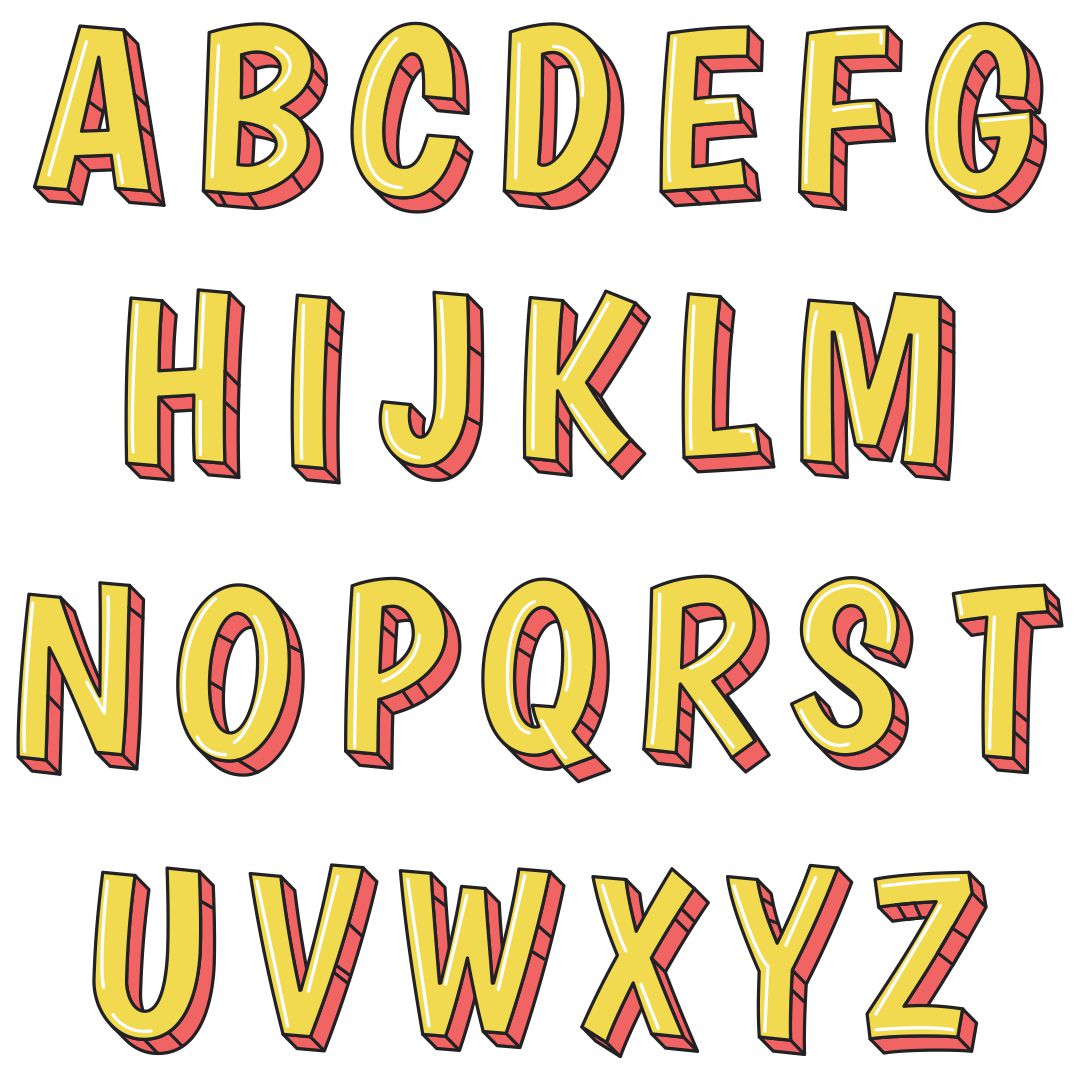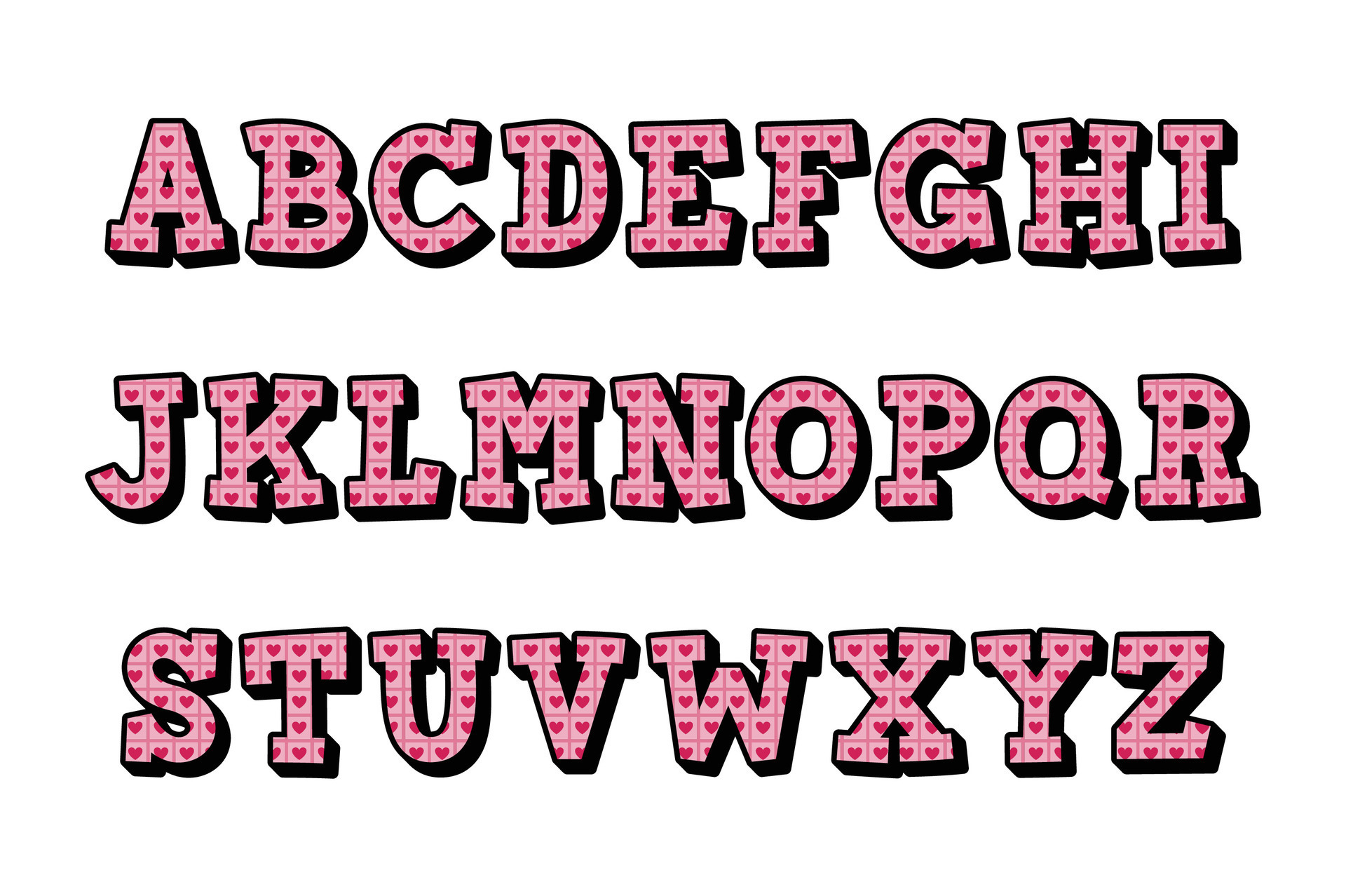Letters For Love - Crafting Meaningful Connections
When we think about expressing true warmth and connection, the idea of "letters for love" often comes to mind. It's a phrase that brings up images of heartfelt messages, carefully chosen words, and a real desire to reach out to someone. These aren't just about romantic feelings, though; they're about the care we put into any kind of communication that truly matters. Every single character, every mark, and every sound we make when we speak or write, you know, plays a part in building those important bridges between people.
Consider for a moment how much thought goes into a message meant to be understood and appreciated. It's about more than just putting words on a page or speaking them aloud. It's about the very building blocks of language itself – the individual letters, the special marks that change their sounds, and even the way we arrange them. To really connect, we often need to pay attention to these smaller elements, making sure our message lands just right. It's a bit like giving a gift; the presentation matters, doesn't it?
So, when we talk about "letters for love," we're also looking at the detailed work of language, like figuring out how to get those Spanish characters just right. Whether it's making sure an "á" has its little hat or getting the "ñ" with its wavy top, these tiny details can show a great deal of consideration for the person on the other end. It’s about putting in the small bit of extra effort to make your communication clear and respectful, which is, in a way, a pure act of connection, really.
Table of Contents
- Understanding the Building Blocks of Language
- How Do We Form Our Letters for Love?
- The Special Names for Letters for Love
- What Makes a Word with Letters for Love?
- Getting Vowel Sounds Just Right for Letters for Love
- Are There Rules for Big Letters in Letters for Love?
- What About Gender in Letters for Love?
- Putting It All Together for Letters for Love
Understanding the Building Blocks of Language
Every single conversation, every written piece of communication, and every shared thought is built from fundamental units. These units are, of course, the individual characters that make up our words. When we consider how to truly reach another person, getting these basic pieces right is a pretty important first step. It’s about more than just stringing things together; it’s about making sure each component serves its purpose in conveying a complete and accurate feeling or idea. For instance, knowing how to produce specific marks, like the accent over an "e" in Spanish, shows a dedication to getting the message exactly as it should be, as a matter of fact.
There are many ways, you know, to set up your computer input device to make the unique characters used in Spanish. This includes those letters with a special mark above them, like "á," "é," "í," "ó," "ú," and "ü," plus the special "ñ," and even the upside-down question and exclamation marks, "¿" and "¡." The ability to create these particular forms is a small but significant act of care, ensuring your written communication is clear and authentic. It really does show a thoughtfulness for the person receiving your message, wouldn't you say?
How Do We Form Our Letters for Love?
Getting these special characters to appear on your screen, for your "letters for love," is something many people wonder about. It’s not always immediately obvious how to make an "á" or an "ñ" show up if your machine is set to a different language. There are, in fact, several approaches you can take to make sure your typing machine is ready to produce these Spanish characters with their special marks, and even the upside-down question and exclamation points. This might mean adjusting some settings or learning a few key combinations, basically.
For someone who wants to share thoughts or feelings in Spanish, mastering these input methods becomes quite helpful. It’s a way of showing respect for the language and the culture, which is, you know, a form of affection. Learning these little tricks to get the right character in place is a step towards more precise and heartfelt communication. It’s about making sure your message is received as intended, with all its correct linguistic nuances, and stuff.
The Special Names for Letters for Love
It's interesting to think about how many of the individual characters in the Spanish writing system have their own distinct names. Some even have more than one way people refer to them, which is kind of neat. People use these particular names all the time when they're spelling things out, especially when they need to be very clear about what they are saying. This attention to the specific identity of each character is another aspect of putting care into our "letters for love."
For example, if you're trying to explain a word over the phone, you might say, "It's 'P' for 'papa,' 'A' for 'agua,' 'R' for 'ratón,' and 'A' again for 'agua'." This way of identifying each part of a word helps to make sure there's no confusion. It’s a small but powerful way to make sure your message is understood, showing that you’ve put thought into its accurate transmission, obviously.
What Makes a Word with Letters for Love?
Have you ever thought about what truly makes a collection of characters into a word? In English, there aren't any set rules about how many individual characters are needed to form a complete word. A single character, when it stands alone and conveys meaning, can absolutely be considered a word. This idea applies to the "letters for love" too, as each one holds the potential for meaning, even by itself. It’s quite fascinating to consider the power held by even the smallest units of language, isn't it?
For instance, the character "I," when written with a capital form, is seen as a word because it is enough to refer to the speaker. This shows that meaning can be packed into even the most minimal parts of our communication. It speaks to the idea that every single character, every single mark, has the potential to carry weight and significance. When we use these basic units to convey a message of affection or understanding, we're building something meaningful from the ground up, you know.
Thinking about words in this way helps us appreciate the building blocks of language, which are so essential for our "letters for love." Whether it's a very short word or a much longer one, each character plays a part. It's about the combination, yes, but also about the individual contribution of each character to the overall message. This detailed look at words reminds us that even the smallest elements can hold significant power in our attempts to connect with others, basically.
Getting Vowel Sounds Just Right for Letters for Love
When we want our spoken "letters for love" to sound just right, paying attention to how vowels are pronounced is incredibly helpful. In Spanish, there are five core vowel sounds, and they are pretty consistent, which makes things a bit easier. Knowing these sounds helps you to speak clearly and ensures your message is heard exactly as you intend it. It’s about making sure the music of your words is harmonious, so to speak.
Here’s a simple chart that shows the five main vowel sounds in Spanish. It includes the characters used to show these sounds when written down, some helpful tips for how to say them, and a few examples of words that use them. Getting these sounds correct is a real act of consideration for anyone you are speaking with. It shows you care enough to make your spoken words understandable and pleasant to listen to, which is a lovely thing, really.
- A (ah): Like the 'a' in 'father'. Example: 'casa' (house).
- E (eh): Like the 'e' in 'bed'. Example: 'mesa' (table).
- I (ee): Like the 'ee' in 'see'. Example: 'libro' (book).
- O (oh): Like the 'o' in 'go'. Example: 'sol' (sun).
- U (oo): Like the 'oo' in 'moon'. Example: 'luna' (moon).
Understanding how these basic sounds work helps a lot with pronunciation. It allows you to speak words more naturally and with greater confidence. This kind of attention to detail in your spoken communication is, in a way, a very genuine expression of care. It means you are putting in the effort to make your spoken "letters for love" as clear and warm as they can possibly be, you know.
Are There Rules for Big Letters in Letters for Love?
When you're writing your "letters for love," whether they're formal notes or casual messages, you might wonder about using capital characters. Just like in English, Spanish has its own set of guidelines for when you should make a character bigger. These rules help to make your writing clear and easy to read, and following them shows a certain level of polish and respect for the written word. It’s about making your message look its best, basically.
In this discussion, we'll look at the specific instructions for using capital characters in Spanish. This includes how to capitalize names of people, special days like holidays, dates, and more. Knowing these rules helps you to present your written thoughts in a proper and thoughtful way. It’s another small but important detail that contributes to the overall effectiveness and sincerity of your communication, and stuff.
For example, in English, we always capitalize the first letter of a sentence, and that holds true in Spanish as well. But there are some differences, too. For instance, days of the week and months of the year are not typically capitalized in Spanish unless they begin a sentence. Paying attention to these kinds of particularities helps your "letters for love" appear well-composed and respectful of the language's own patterns, pretty much.
What About Gender in Letters for Love?
One interesting aspect of Spanish, which might seem a little different if you're used to English, is that many things have a grammatical gender. This applies to nouns, which are words for people, places, things, or ideas. When you're trying to express yourself clearly in Spanish, especially in your "letters for love," understanding this concept of gender for nouns becomes quite helpful. It's a fundamental part of how the language works, so it's good to get a handle on it, right?
Often, words that end in the character 'o' are considered masculine. However, there are also masculine nouns that do not end in 'o'. Words that finish with certain specific characters or groups of characters are often, but not always, masculine. Knowing these patterns helps you to use the correct articles (like 'el' or 'la') and adjectives, making your sentences flow naturally and correctly. It’s a subtle but important detail that really makes a difference in how your message is perceived, you know.
For example, words ending in '-ma' like 'problema' (problem) or 'tema' (topic) are often masculine, even though they don't end in 'o'. Similarly, words ending in '-or' like 'doctor' (doctor) or 'flor' (flower, though 'flor' is feminine) can be masculine or feminine depending on the word. It requires a bit of learning, but it’s a key part of speaking and writing Spanish accurately. This attention to grammatical detail is another way we show care for our communication, ensuring our "letters for love" are linguistically sound, to be honest.
Putting It All Together for Letters for Love
So, when we consider the idea of "letters for love," it really does extend beyond just the emotional content of a message. It encompasses the careful construction of words, the thoughtful application of language rules, and the genuine effort to communicate clearly. Whether you're trying to send a warm greeting to a friend, complete an application for a new job, or exchange messages with a business contact, the underlying principles of clear and respectful communication remain the same, essentially.
The ability to type specific characters, to know the proper names for letters, to understand what makes a word, to master vowel sounds, to apply capitalization rules, and to grasp noun gender – all these elements contribute to effective communication. Each of these small acts of linguistic precision helps to ensure that your message is not only delivered but also truly received and understood. It’s about building a strong foundation for your thoughts and feelings, pretty much.
Ultimately, every time we choose our words with care, every time we pay attention to the specific forms of characters, and every time we strive for clarity in our expression, we are, in a very real sense, crafting "letters for love." These are messages built with consideration, precision, and a genuine desire to connect. It's about the commitment to making your communication as effective and meaningful as it can possibly be, at the end of the day.

How Many Letters Are in The English Alphabet?

Large Colored Letters - 10 Free PDF Printables | Printablee

Versatile Collection of Lovely Alphabet Letters for Various Uses